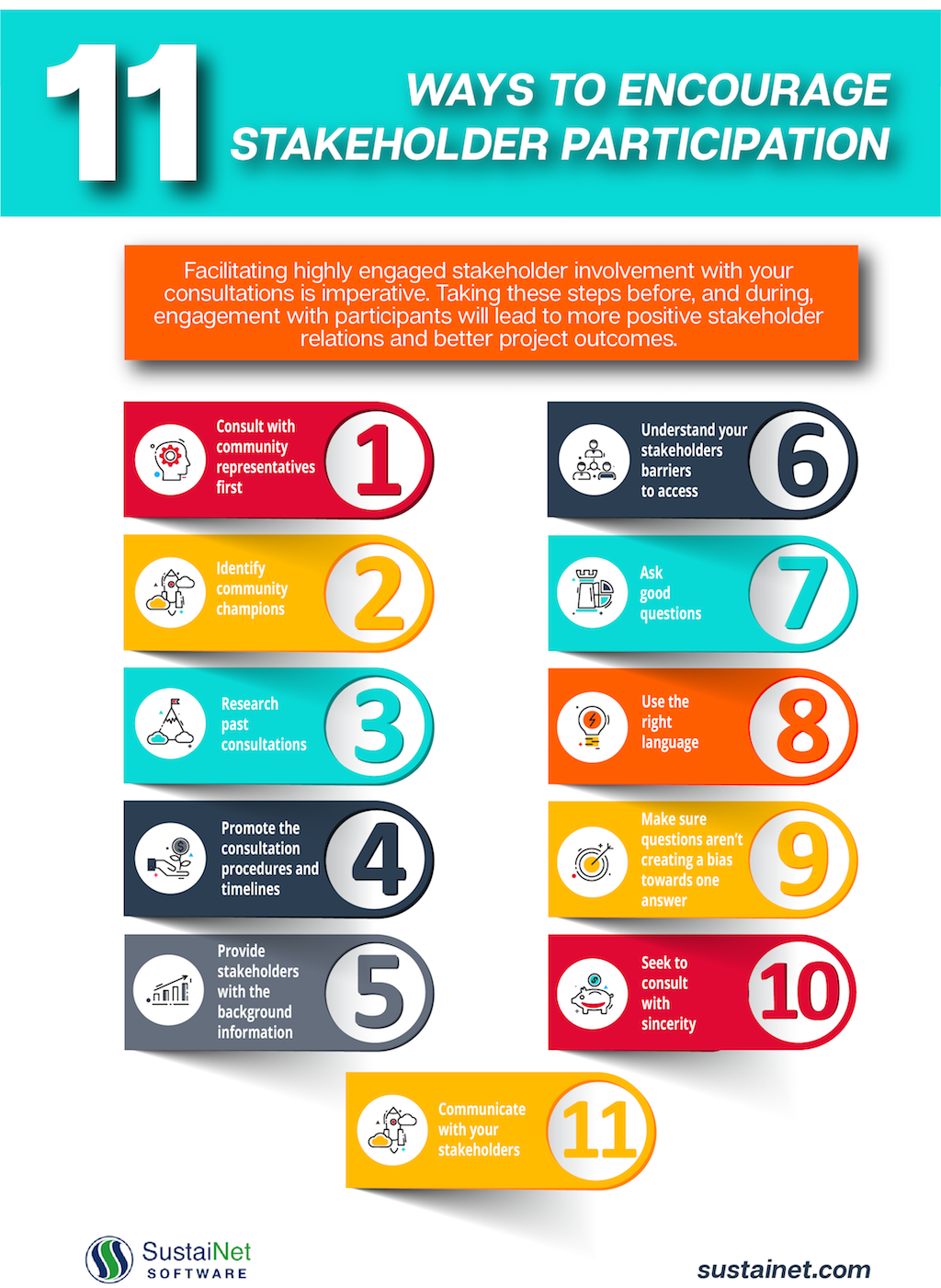Facilitating highly engaged stakeholder involvement with your consultations is imperative. Taking these steps before, and during, engagement with participants will lead to more positive stakeholder relations and better project outcomes.
It is not enough to create the framework to consult with your stakeholders, you can further learn how to encourage stakeholder participation through these eleven strategies:

While a focus on recruiting the groups and individuals who are needed to provide meaningful feedback related to your project is essential, it is also highly valuable to consider what types of consultation methods to use, and how to ensure participant access to those methods.
Stakeholders will participate according to their interest in your project and ability to contribute – but involvement also depends on the degree to which the outcomes of the project will affect those being consulted.
11 ways to encourage stakeholder participation:
-
- Consult with community representatives first. When working with groups, find out what existing networks and structures are already in place to support community engagement and reach out to leaders and facilitators within those groups to explain your intensions and ask for their feedback on your strategy.
-
- Identify community champions that can help promote the consultations and encourage participation. Who are the influencers and leaders in a community or group? It is a great use of your energy to work closely with them and seek their support for your outreach efforts.
-
- Research past consultations to understand the positions and interests of stakeholders, as well as identify potential challenges. Focus on understanding what did and didn’t work well previously, and seek to anticipate any red flags.
-
- Promote the consultation procedures and timelines to ensure everyone affected receives the messages. Use many channels. This will likely be via existing community newspapers, radio and websites, as well as social networks.
-
- Provide stakeholders with the background information they require to participate in a meaningful way. Anticipate what questions people will have about the consultation process, the project itself, and how their feedback will be used.
-
- Understand your stakeholders barriers to access. What are the geographic limitations, access to technology, or time constraints involved? What can you do to make sure more people can get involved?
-
- Ask good questions. How you ask consultation questions can be as important as what you ask. Fuel active participation from stakeholders by writing good consultation questions.
-
- Use the right language. Write concise consultation questions and background documents using plain language that can be understood by your intended audience. Avoid overly technical jargon. Ensure language used is culturally appropriate.
-
- Make sure questions aren’t creating a bias towards one answer. If the tone of your survey is balanced it will help generate feedback that reflects people’s actual attitudes
-
- Seek to consult with sincerity. Your stakeholders will know if a consultation activity is merely tokenism.
-
- Communicate with your stakeholders about who else is being consulted, and how their input will affect your company’s activities.
Challenges related to public consultation impact organizations from many industries. Merely embarking on a community consultation initiative doesn’t mean an organization will receive the participation and feedback outcomes they hoped for. Instead, set your consultation efforts to succeed from the start.
Facilitating good stakeholder involvement in your consultations is imperative. Taking these steps before and during engagement with participants will lead to more positive stakeholder relations and better outcomes for your project.
About SustaiNet Software
StakeTracker stakeholder management software meets the needs of today’s stakeholder engagement and public consultation professionals by helping them efficiently manage interactions and communications with stakeholders, communities and the public. LEARN MORE.
.

Leave a Reply